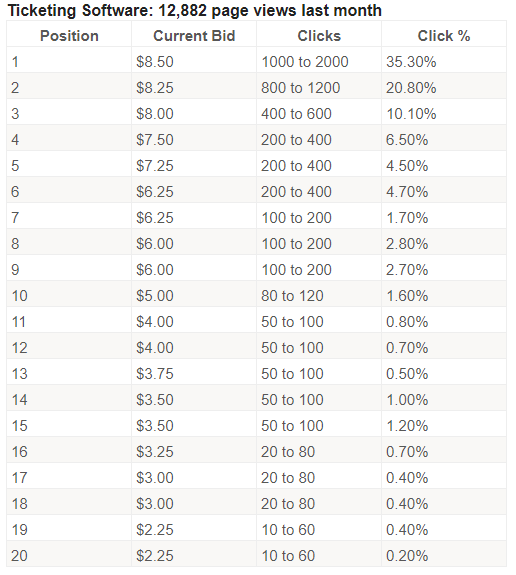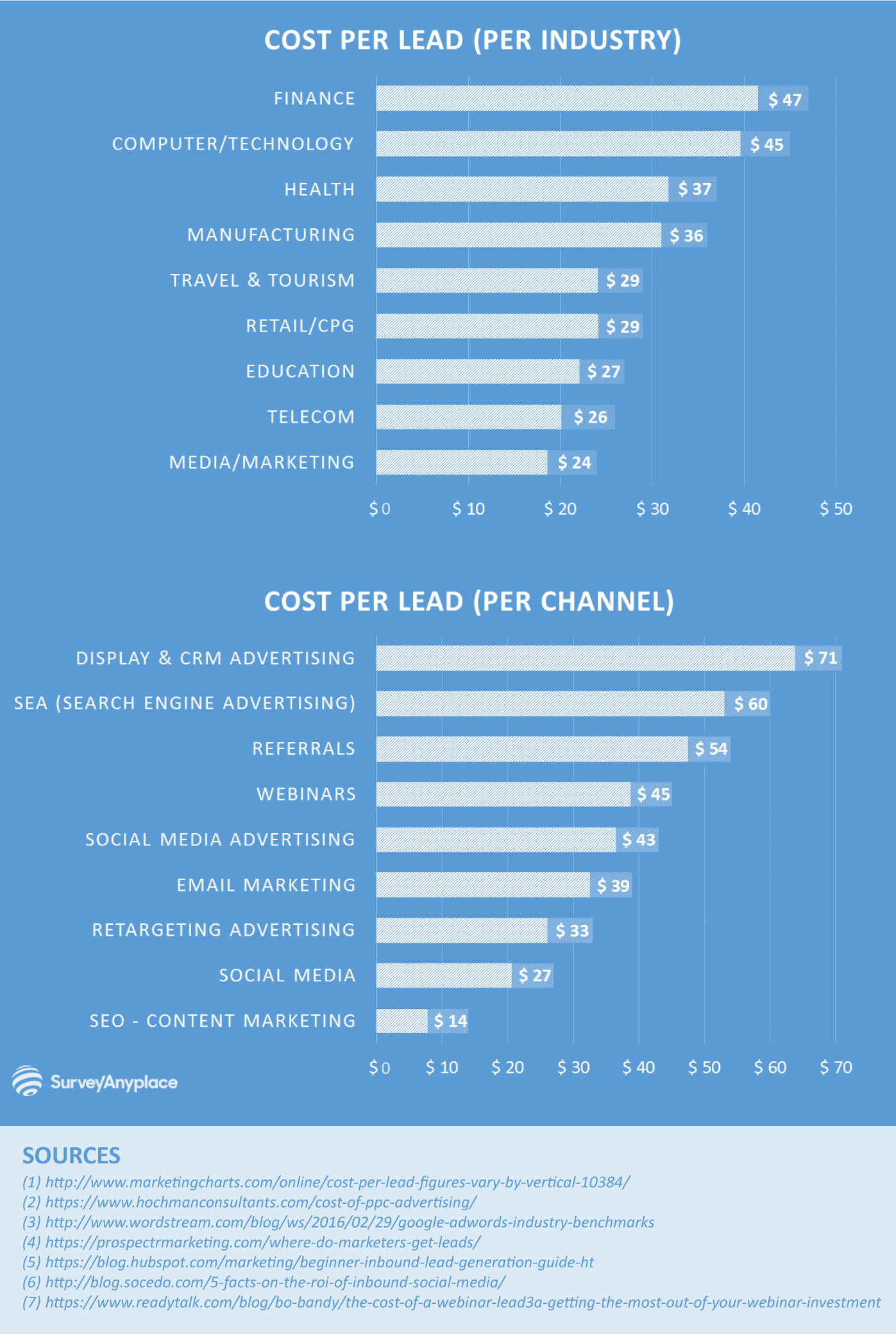
Why You Won’t Find Us On Third-Party Review Sites
“In my job, people try to sell me things.” – Everyone. Ever.
The Aim
As a business, if you provide a solution that aims to make people’s jobs easier — whether through your product, messaging or mission– it’s a good idea to show that you’ve successfully achieved that result with other customers before you try to prove you can do the same for new, potential customers.
Logically, we know that people search things like “best event software” or “best ticket solutions” when they’re trying to solve the issues that Tito helps with. Inevitably, one or two of the first things they see when they do so are third-party review sites like the ones we’ll talk about a little bit further down.
Specifically, the research we’ll get into below was in reference to B2B review sites, rather than the Tripadvisors and Yelps of the world.
More specifically, our marketing and sales team set out to find a particular software review site that could help us with a couple of things:
- To help people find us when they’re looking for a solution to help make their event experience better both for buyers and organisers.
- To get feedback from users on an impartial forum, be it positive or negative. (Either helps you improve.)
Unfortunately, the experience wasn’t quite as straightforward as making a two-point list.
The Commitment
We looked into a variety of solutions to try and achieve these goals. The solutions were ones which we were aware of either through sales teams reaching out to us, familiarity with the sites from previous companies, or the humble Google search that I alluded to above.
Case Study: Capterra
Capterra were brought to our attention through all three of these avenues.
As a software company ourselves, you can understand that we’re empathetic when it comes to the workload, assets, commitment and stakes that go into developing something. That said, we also appreciate that, when a customer makes an investment, they want to see results.
All that taken into consideration, our first reaction to the collateral we were sent over was that the solution was pretty expensive:

This pricing was sent directly from the team at Capterra and, if you do the quick maths, it’s pretty prohibitive for a 10-person company (a peak which we hadn’t even reached at the point of this research.)
If we take the mid-range of clicks (1,500 x 8.50) for the first result and multiply it by the cost, the princely sum of $12,750 (or €10,796.64) will earn you the top slot and will still only garner just over one third of the clicks from the search.
On top of that, the conversion rate from one of these clicks to a free trial or demo request comes in at a cost per lead (CPL) of $113.33*. When you consider that the general across the tech industry is $45, you might get a bit annoyed as well.
Much as spending more than your initial intention is disappointing, the irks were only getting started.
*The logic behind this involved using the average of conversion rate as detailed to me from Capterra sales (6-9%) which was 7.5% to deduce the total number of leads from the top spot (112.5) and dividing that into the total cost for the campaign.
The Experiment
Case study: G2 Crowd
After the initial calls with a couple of vendors, we decided to do some online research to get an idea of previous customer experience. In an unsurprising turn of events, you can’t review these companies by using their own platforms, so we looked for first-person tesitmonials to get a better idea.
What we found not only managed to further our disappointment, but it downright solidified that these companies had nothing to do with our ethos.
My colleague who leads our commercial efforts alerted me to this post by Alison Morris, Director of Accounts & Customer Experience at Honey.
The biggest takeaway for us in the read was this:
It’s important for me to say that my anger is NOT because we fear bad reviews about Honey. We hear tough, critical feedback all the time. In fact, we welcome it. It’s how my team learns and our product evolves. We always care about what our users think, be it positive or negative — and they know this because I’ve taught my team to build genuine, honest relationships with our customers.
My anger IS because of how thoughtlessly you put everything we’ve worked for on the line. You have put my hard-earned customer relationships at risk. You have willingly marred the Honey brand. You have left my users feeling nervous, annoyed, and confused. And worst of all, you have made my customers second guess their trust in me, my team, and our company.
Given that an employee generally follows the procedures laid out to them by their trainers and managers, we’ve anonymised the individuals who were assigned to us to respect that their actions weren’t purely based on what they may consider personally to be best practice. All that said, the response we got when we raised our concerns with sales was less than reassuring:
“Hi there,
I’d be more than happy to address the article and alleviate your concerns. Are you available to connect early next week?
Please let me know when works best for you;”
When we received the above email, we asked if we could please handle the conversation over email for the time being.
In response, the rep wrote:
“In that instance, once we were contacted we stopped contacting Honey’s customers and reached out to try and work with them on the issue. I can assure you that we follow all the international rules and regulations regarding solicitation for reviews.
Since that time there has been a number of changes with our site. G2 Crowd can help to increase Tito’s brand awareness, promote customer advocacy, identify buyers actively researching Tito, and create custom data fueled content for strategic outreach.
Please let me know if you are interested in learning more about our platform and the changed that have been made over the last year, and I will send over a calendar invite for early next week.
Thanks”
There were a few issues with this:
- The article states that contact didn’t cease after the first request for it.
- “International rules and regulations” is synonymous with using what is legal as the benchmark, as opposed to what is right or requested by the customer.
- “Creating custom data fueled content for strategic outreach” is synonymous with “more emails.” And
- We obviously didn’t want a sales call, but they persisted.
In response, we asked for a few bullet points outlining the ways their approach has changed since their issues with Honey. We got this answer:
“Hi,
Outreach is typically done in two ways; 1. when you, the vendor, has opted for a review campaign and provided us with a list of your customers to reach out to, or 2. when a person has made a G2 Crowd account to write reviews with.
Happy to cover this more in depth over the phone.
Thanks,”
So, they wanted us to either give them a list of our customers to annoy, OR they wanted to harangue anyone who leaves a review voluntarily. Nice. ?
From there, I decided that I ought to personally look into how one of our potential customers would be treated were they to leave us a review by offering myself as tribute. Somewhat out of morbid curiosity, otherwise out of wanting evidence to flag this for people who don’t enjoy being pummeled by outreach.
I left one (1) review and here’s how G2 Crowd decided to reward me:
.gif)
Aside from the impact on impartiality and dedication that bribing reviewers with $10 gift cards might have, this was overkill.
Now, I’ve been in both the marketing and sales games respectively, so I appreciate the value of persistence. The big caveat with that is respect. Beyond this amount of messaging being blatantly ineffective (notice that I’ve opened very few of the emails since their “campaign” began, and did so in research for this article), there’s a deeper effect caused by this approach. Harvard Business Review put it particularly well by saying:
“For many consumers, the rising volume of marketing messages isn’t empowering—it’s overwhelming. Rather than pulling customers into the fold, marketers are pushing them away with relentless and ill-conceived efforts to engage.”
The Disappointment
Having discovered these potential downsides, we went to three more vendors and couldn’t find a single one that wouldn’t potentially market to our customers either if we asked them to leave reviews voluntarily as and if they liked, or if the review site asked them to leave reviews.
That said, I have to briefly acknowledge TrustRadius in all of this because we didn’t even get to that stage with them. While I didn’t perform the same experiment on their site (i.e. leaving a review and instantly regretting it.) they did send me this:
“Hi Maria,
Our primary value to vendors is in helping them source in-depth reviews, which can then be used as a rich sources of content for marketing and a tool for sales enablement. Our Reviews and Reference Acceleration program only makes sense for much larger companies. We don’t want to sell you something that will not generate a healthy return on your investment.”
Sure, you could look at it as an automated email from a workflow somewhere that tells them we’re not worth enough money to them to waste their energies, but at least it’s honest.
The crux of why you won’t find us on third-party review sites (regardless of who they are) is this: it might seem counter-intuitive to be part of the 13.8% of companies with 1-10 employees who don’t use review sites like this. Typically, going with “best practice” and “the done thing” are avenues that aid growth, but we’ve gotten into a habit of doing a cost-benefit analysis with growth.
A good example is how we approached GDPR. Instead of worrying about shrinking list sizes, we view solutions like this as being an avenue to empower people; to help them step away from marketing that’s trying to convince them of the benefit of a purchase without proving concrete value. As we’ve said before, we don’t really believe in doing what everyone else is doing and prefer the “Fuck all that noise” approach.
From this perspective, we always knew that we couldn’t abuse the privacy and good will of users, most certainly not for some potential gain that was going to cost us a bundle of money for the “privilege”.
The Alternatives
Briefly returning to a reference I made earlier about the average cost per lead, this chart compiled by Survey Anyplace puts other marketing avenues that you might choose instead of third-party review sites into context:
As the above indicates, there are many other ways and means to bring attention to your brand that are significantly more affordable lead generators than what I calculated for this project. They mightn’t all be less intrusive, but some certainly have the power to be.
With all this stacked against third-party review sites (at least the ones I’ve been acquainted with) it seems it might be worth their while to offer more of an apology to those concerned than:
“Hey Maria! We’re so sorry you had this experience! We’re working on it!!!! Thanks!!!!”
